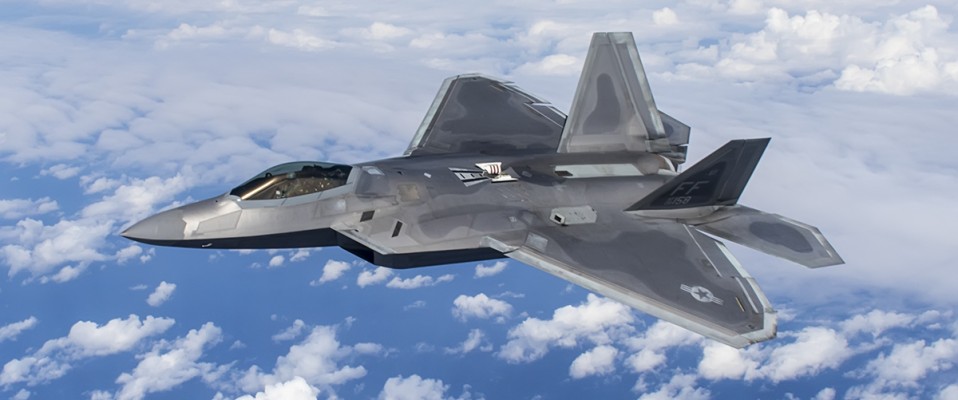The Making of an F-22 Raptor Pilot
Article and Photos by Todd Miller
September 18, 2016
With the F-35A program generating an abundance of positive news, it is easy to overlook that the F-22A Raptor remains the USAF platform of choice for the Air Superiority role. In a recent interview 1st Fighter Wing Commander, Colonel Pete Fesler paraphrased comments made by the Commander of Air Combat Command, General Herbert “Hawk” Carlisle; “The F-35 is the best air to air (A2A) platform in the world, except for the F-22. The F-22 is the best air to ground (A2G) platform in the world, except for the F-35.” Fesler continued, “So we have two aircraft, one designed primarily for A2G, one primarily for A2A, both with complimentary capabilities to assist each other in either role. Together they create a team that is optimized to simultaneously go after air and surface threats.”
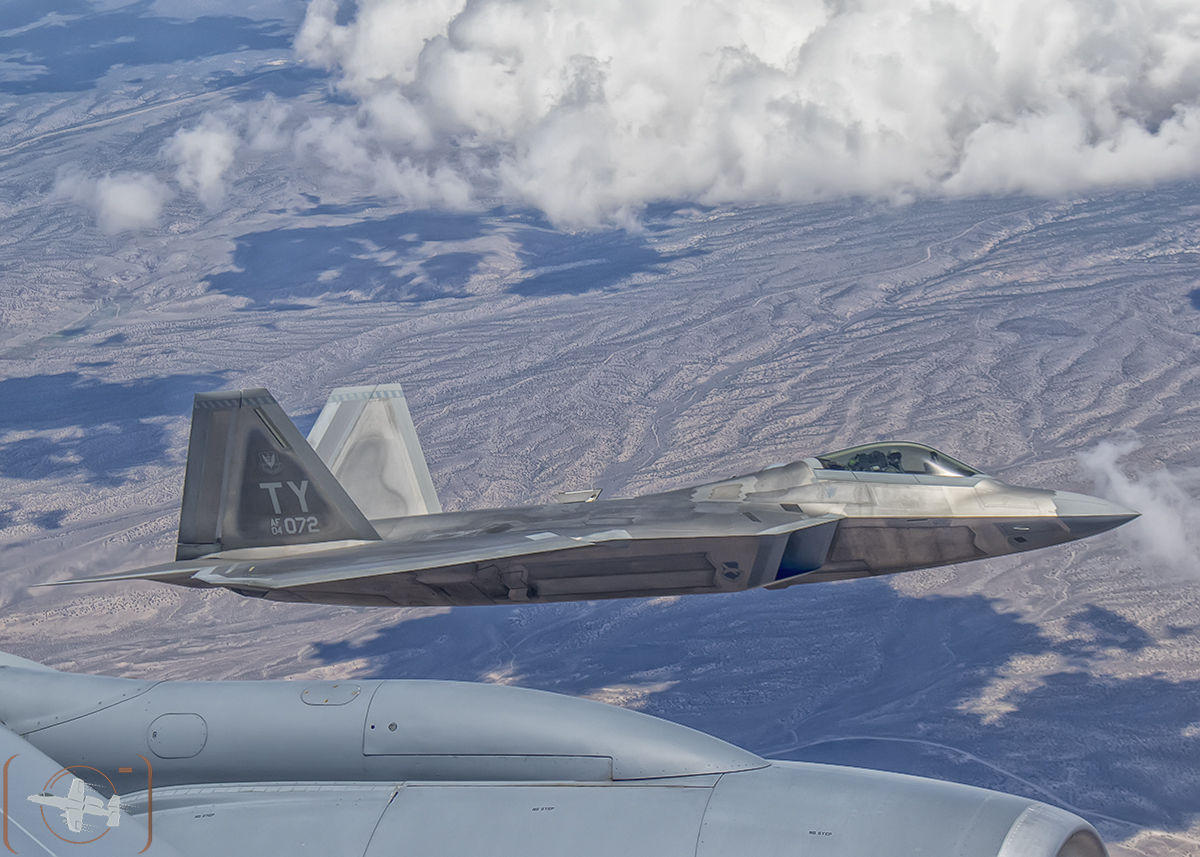
F-22A 325th FW, 95th FS from Tyndall AFB pulling aside the tanker prior to fuel during Red Flag 2015-3.
The Lockheed Martin F-22 Raptor has a unique combination of stealth, speed, maneuverability, operational altitude and weapons load that make it the “bar” by which A2A fighters are measured. Seen in the context of the current and emerging threat environment, the capabilities the Raptor brings to the fight drive a paradigm shift in the role of the fighter pilot. Operating the stealthy F-22 in highly contested space with anti access/area denial (A2/AD) systems AND adversaries with their own stealthy aircraft provides extraordinary challenges. These current and anticipated air and surface threats drive an aggressive training regime for Raptor pilots.
On a recent visit to Joint Base Langley-Eustis (JBLE) Lt. Colonel Charles “Stab” Hebert, Commander of the 71st FTS (Fighter Training Squadron) and first assignment Adversary Air (ADAIR) pilot call sign “Leeroy” provided insights into the selection and training of Raptor pilots. The 71st FTS flies the Northrop T-38 Talon as ADAIR support for all F-22 Raptors based at JBLE (27th FS, 94th FS & the 192nd FW).
A Raptor pilot benefits from systems that provide tremendous situational awareness. However, they’re wildly outnumbered.”
Raptor Pilot Qualities
During college Leeroy entered the Air Force through the Reserve Officers’ Training Corps (ROTC), and subsequently took his Undergraduate Pilot Training (UPT) at Sheppard AFB. As a student graduating from the UPT, Leeroy was assigned to the 71st FTS “Ironmen” where he has honed his piloting skills flying against the Raptor. After what will be two years of flying as a Raptor adversary (with at least 1 Raptor Kill – more on that later), Leeroy is now uniquely qualified to achieve his goal and become a Raptor pilot. In the short time since graduation Leeroy has become qualified as an instructor in the T-38 ADAIR program. As Hebert explained, Leeroy is making a little history – being the first, first assignment pilot to become an ADAIR instructor. Leeroy applied himself and broke barriers by achieving something extraordinary in just over 18 months at his first assignment. This is precisely the type of high achievement individuals with excellent flying skills that the Air Force looks to fill Raptor seats.
Depending on available slots, some students are assigned to the Raptor B-Course at Tyndall AFB right out of their Undergraduate Pilot Training (UPT). Raptor pilots also come from the existing Air Force fighter pilot ranks when they move from another “fighter” platform to the B-Course at Tyndall. The approx. 8 month long Raptor B-Course consists of about 400 hours of academics, more than 45 hours of simulator time, and 45-55 hours of actual flight time.
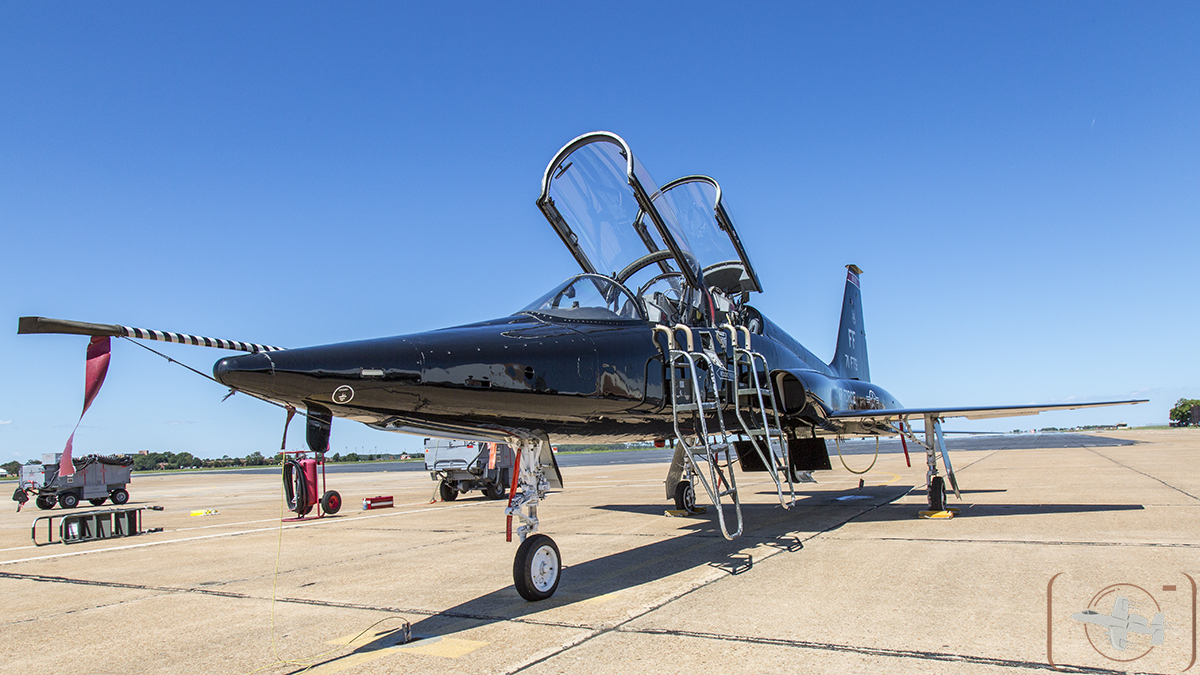
T-38 Talon ADAIR of the 71 FTS on the ramp at Joint Base Langley-Eustis (JBLE).
Hebert speaks insightfully, he was one of those originally tasked to transition the T-38s from training support for the F-117 to the F-22. Hebert is qualified in the T-38, F-15C, and F-22 – so he knows what’s involved in excelling as an air combat, adversary and F-22 pilot. With that wealth of experience Hebert notes that not every pilot has the aptitude or the skills to fly the F-22 Raptor. As Hebert says, pilots are graded on many aspects throughout their UPT including; instrument, formation, low level, aerobatics, pattern work, academics, physical condition, and professional conduct. By the end of training, it is clear which students are qualified for the F-22. And as Hebert states emphatically, “it matters, because you have a very expensive single seat platform and one hour of training in the Raptor may involve multiple Raptors, a Tanker, AWACS, and multiple adversaries. Leadership needs to ensure the student has the right aptitude, the ability to learn from the sortie without multiple do overs, and progress to the next step.”
Raptor capabilities include sensor fusion that provides the pilot with superior situational awareness vs. Gen 4 fighters. Coming from the F-15C Eagle, Hebert says, “I used to look at Raptor pilots and think, those guys are so lucky, the jet does everything for you. Then I flew the Raptor for myself, and yes the jet does a lot for you, but much more is expected of you! There are fewer aircraft and the Raptor pilot is addressing a larger mission set. The aircraft has the speed and sensor suite, it can do anything you need a fighter to do and more, however you have to manage your fuel and your weapons. The role of a Raptor pilot is more like a mission commander (even as a wingman) as opposed to the Eagle. One Raptor is expected to do the work of multiple Eagles. It’s not easy to employ the Raptor well, because you have a lot to manage.”
Each step forward in technology drives increased platform capability. The era of platforms dedicated to a specific role are winding down. Platforms like the Raptor now include capabilities that may all be utilized on the same mission; A2A, A2G, electronic warfare/electronic attack (EW/EA), and Intelligence, Surveillance, Reconnaissance (ISR). A familiar way to understand this is to consider the mobile phone from its inception to what we use today. When first introduced it was “just” a mobile phone, then became a phone with added calculator, notepad, email, and now the mobile phone is a “smart phone” that includes cameras, office assistants and so much more. The F-22 does more, and that “more” translates into a significant increase in the scope of the mission set.
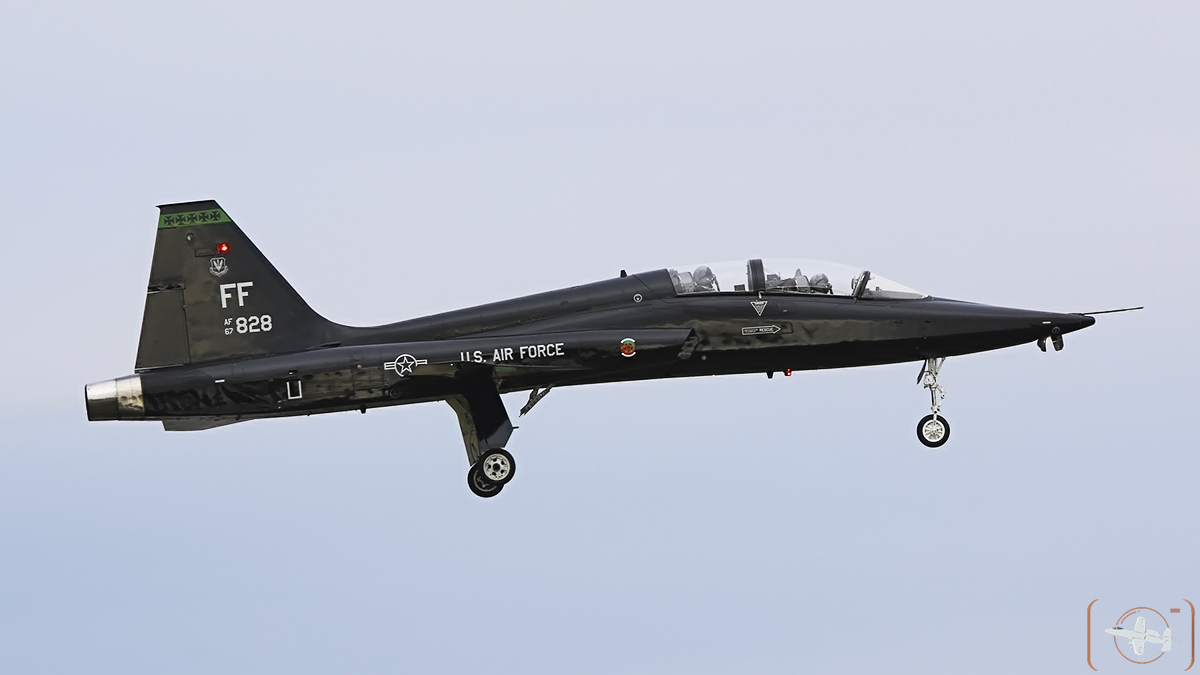
T-38 Talon of the 71st FTS lands at JBLE fall 2014
While new mission sets are seldom discussed (due to the classified nature of the capabilities), even traditional mission sets have many variables. The Raptor may be flown in a blended environment with both Gen 4 and coalition (international) jets, or fighting on its own. In a blended group the Raptor often functions as a battlespace manager for the group providing a “god’s eye view” to all participants – even as it keeps the airspace clear of adversaries, and sends volumes of ISR data back to other platforms. In some cases, the mission commander will utilize Raptor driven information and designate the missiles of other aircraft to down adversaries, ensuring the Raptor keeps maximum weapons load for use as a last resort (as we have seen in Red Flag exercises).
In another scenario the Raptor may be driven by a time sensitive window to get a bomber on target and aggressively strike deep into contested space with scores of hostile air and ground threats to evade or neutralize. As Hebert summarized, “the Raptor pilot is called upon to manage each unique environment, and that challenges how you manage your weapons. Do you sling one missile or are you slinging two, ensuring the threat is killed? That affects what weapons you have available on board to support the mission on egress. So there is a lot to think about.”
It goes beyond multi-tasking, to multi-tasking in a fluid, dynamic environment with an uncompromised commitment to survival and achievement of mission objectives. Each circumstance brings a new set of challenges to utilize the available sensor information and deploy the aircraft effectively. Hebert says “the pilot is constantly figuring out how one change affects everything else and what decision has to be made now.”
Adversary Air
While of 1960s vintage, the sleek, black T-38s are effective adversaries for the Raptors and train against them daily. Not to be confused with dogfighting within visual range (WVR) (generally suicidal for a T-38 vs an F-22), the primary training involves taking on multiple bogeys beyond visual range (BVR) that attack in a wide variety of formations.
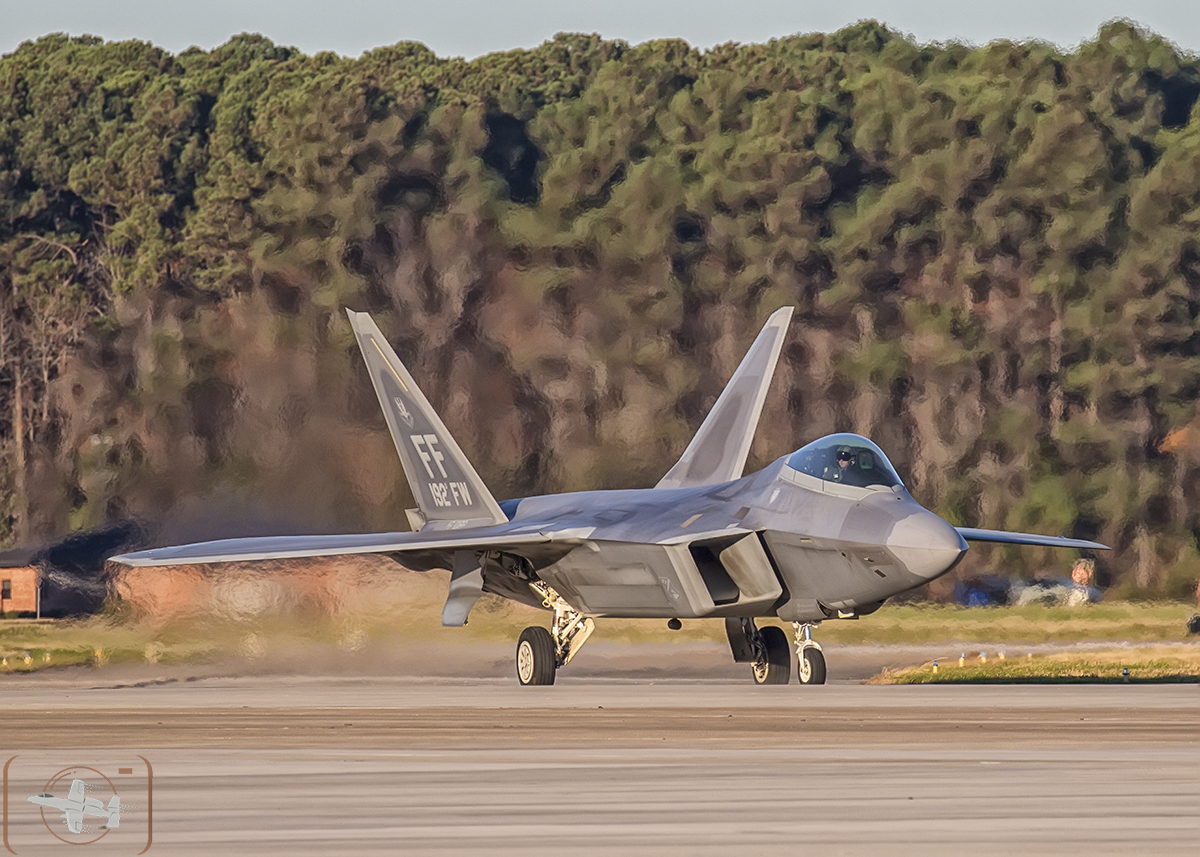
F-22A Raptor of the 192nd FW taxis at the inaugural TriLateral Exercise, JBLE 2015.
In the past F-22 pilots used to slip in and out of the T-38s to try their hand against their own aircraft, but that is generally not the case today. Each pilot is focused on their specific craft. Leeroy brings a fresh but disciplined approach to flying as an F-22 adversary. As he explained, he flies the mission while maintaining a series of priorities revolving around the mission and safety; maintaining fuel; staying within the designated airspace; keeping a safe distance from other participants. “The formation (to include my wingman and myself) must be executed correctly, the tactic we have been tasked to reflect must be executed correctly. Not merely flying a profile, ADAIR must replicate a tactic and in some cases an aircraft type. It is the responsibility of ADAIR to drive specific learning objectives for the Raptors.”
For the T-38 pilot, communication is typically verbal (from an AWACS or Ground Controller), and situational awareness is the 3D picture the pilot paints in their own mind. In this respect, there is no help from the aircraft! With aircraft often converging at well over 1000 mph – things are happening fast, leaving lots to think about and little time for decisions and actions.
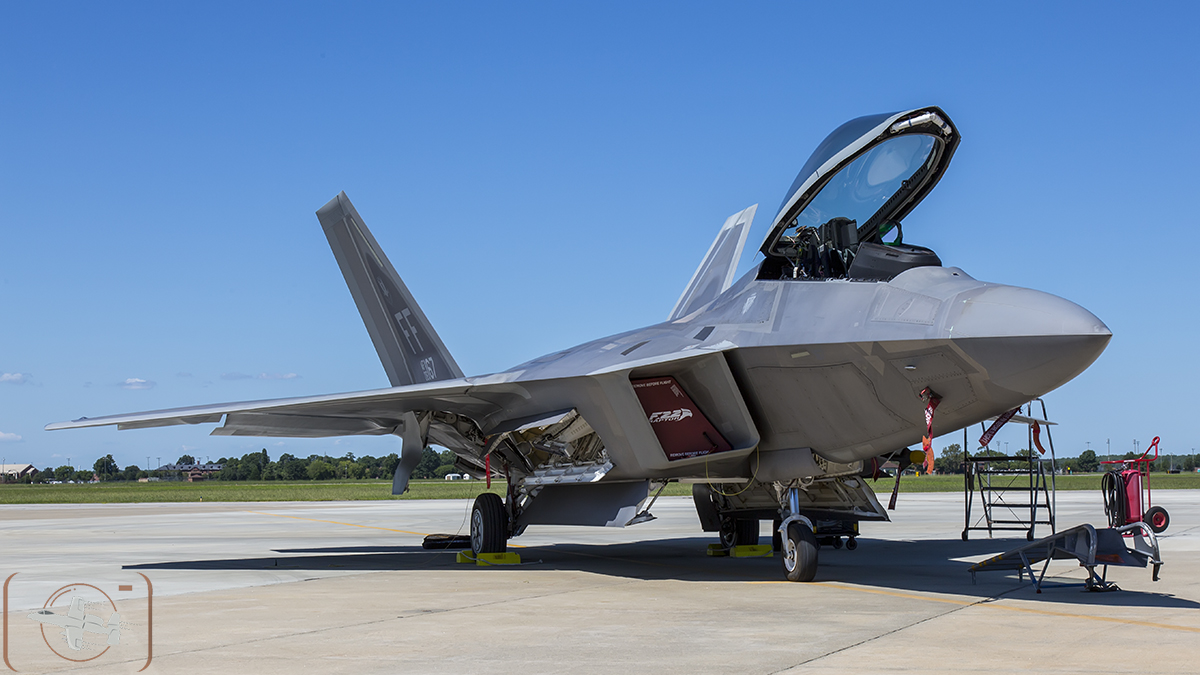
F-22A of the 1st FW, 27th FS on the ramp at Joint Base Langley-Eustis (JBLE).
Hebert comments, “I like Leeroy’s response because it illustrates the difference between what’s happening with the Raptor versus Leeroy. Leeroy is flying in a fast jet, he’s really got a lot of variables; he’s thinking about communication; he is literally building a picture in his mind so that he knows what he’s doing next, where his threats are or how he can affect a mission. That is hard. But his effectiveness is small compared to the Raptor. A Raptor pilot benefits from systems that give him tremendous situational awareness, they’re not having to do as much mentally, however they’re wildly outnumbered. There’s a lot more aircraft out there trying to kill those two or four jets and so they have to figure out how they’re going to complete their mission, preserve their fuel, preserve their weapons and realize it’s not just an air to air threat, there are also built in air to ground threats. The Raptor pilot must stay true to their own limitations associated with that mission set. Our training is very challenging on both sides.”
…if you do get close, right on the Raptors six and you think you are going to get a kill, you quickly learn that the maneuverability of the F-22 is incredible.”
It is clear – Raptor pilots are pressed through a crucible. As has been noted in the USAF Red Flag exercises and USAF Weapons School at Nellis AFB – the objective is to train pilots in environments designed to be equal too, or more difficult than what is expected in combat. While virtual training is utilized, Hebert notes that there is nothing that can train like being in the air. The physical exertion, the actual reality of managing fuel, weapons, the mission set – all escalate dramatically in the air.
Fight’s On
The typical training sortie take one of three forms, involving 2 – 6 or more T-38s vs 2 – 4 F-22s;
Short Range, Low Awareness: This scenario typically involves two to four T-38s vs two F-22s with the focus on ACM (air combat maneuvering). The Talons approach the Raptors quickly from behind. The Raptors turn around with low awareness and attempt to quickly kill all threats. Just like an old western shootout, except the Raptor pilot has to contend with three or four gunslingers at once!
Offensive Counter Air (OCA) and Defensive Counter Air (DCA): In these sorties ADAIR flies as a hostile nation in a scenario that is drawn up by mission planners. ADAIR represents a specific type of aircraft and a particular threat country. A designated “territory” is defended, or attacked. Engagements that end in kills to ADAIR send the T-38s back to a specific location to regenerate and reenter the battle. Given the regeneration those 6 – 8 T-38s might represent a total of 20 – 30 bandits for the F-22s to address during the sortie.
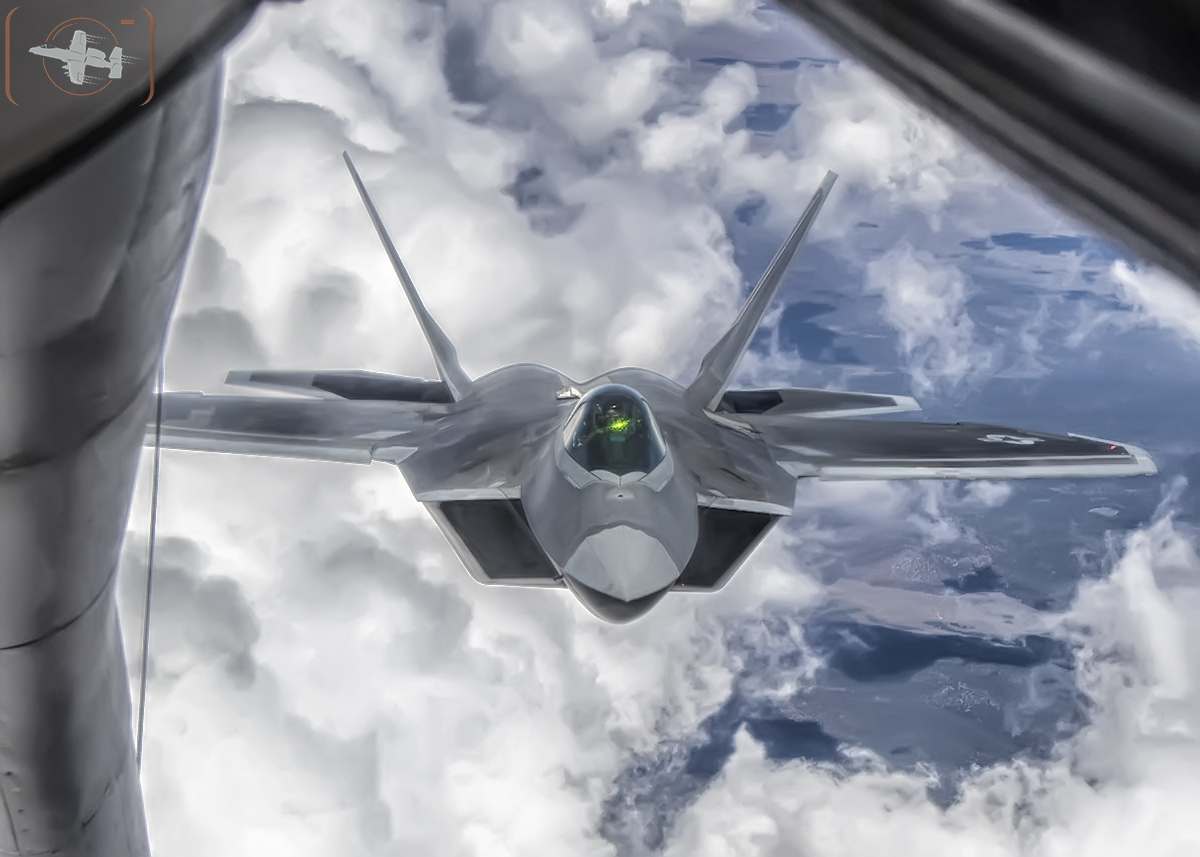
F-22A 325 FW 95 FS from Tyndall AFB sliding up for fuel during Red Flag 2015-3.
Both OCA and DCA are “missionized scenarios” so the regeneration threat airfields are identified and coordinated with intelligence. The Raptors must typically honor a surface to air threat and they will be penalized if they violate. The surface threats are critical to reflect the A2/AD environment that the Raptor will be expected to fight and prevail in. The problem sets created for Raptor pilots are difficult, and represent a significant step up in sophistication and difficulty from Gen 4 air to air training exercises (that have primarily focused on ACM or specific mission set served by a given platform).
Hebert addresses the question many are asking, “How is that that a 1960s aircraft challenges a Raptor? By volume, size, and speed. It’s the fact that Leeroy is well versed in Raptor tactics. We know how to work the Raptor to the best of our ability, add intelligence and the difficulties associated with their mission sets (such as their escorting someone you know they have to protect at all costs) -and it gets hard, quick.”
Pride must be taken in the execution of the mission, because it must get old always getting killed! Has Leeroy ever “killed a Raptor?” A brief moment of hesitation indicates a reluctance to share, “Yes, I have – it happens from time to time.” Now before readers and armchair fighter pilots lose their minds, there are a number of reasons why a 1960s T-38 may get a Raptor kill, and none of them include the Raptor being out flown by a T-38 in a WVR engagement. As Hebert explains, it was likely a very hard kill. While it could have been a mistake (an overlook) by a Raptor pilot, more likely the Raptor was being tasked to do something very aggressive. We may ask them to achieve the impossible. We have to push them beyond their limits to effect valid training, to hammer home hard lessons. It is a natural if not critical part of the training.
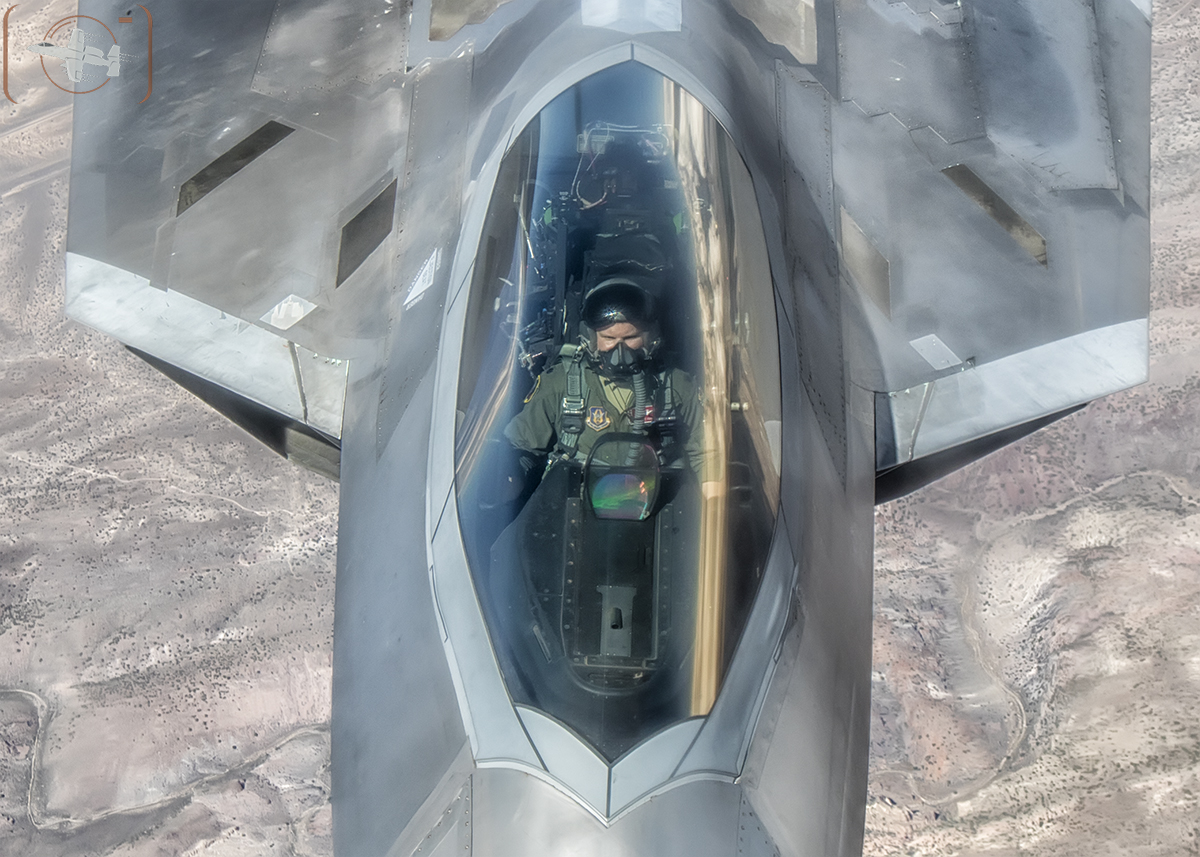
F-22A 325 FW 95 FS from Tyndall AFB taking fuel during Red Flag 2015-3.
With Leeroy soon to be flying Raptors he reflects on the most impressive things he’s seen from both the perspective of the F-22 and the T-38. “With the Raptor – you constantly die without ever seeing it – that’s very impressive” he both laughs and frowns. “On the other hand, if you do get close, right on the Raptors six and you think you are going to get a kill, you quickly learn that the maneuverability of the F-22 is incredible.” The Raptor turns on a dime, and you are another Raptor statistic. And the most impressive thing about the T-38 Talon? Sounding much like I might expect a B-52 pilot would, Leeroy answers, “to fly a 1960s jet in 2016!”
The situation is ripe with paradox. A 1960s jet flown by a young, very capable pilot is making an invaluable contribution to the creation of pilots for the most lethal air superiority platform of today and tomorrow. What could be more exciting? I looked at Leeroy, and he could not wipe the smile off his face, he’s enrolled in the Raptor-B-course starting this coming January. Now that is exciting!
Click on an image below to page or swipe through the gallery:
Todd Miller resides in rural Maryland west of Baltimore. Given less than required eyesight Todd’s dreams of fighter pilot were grounded, but the love of military aviation has never subsided. Todd enjoys capturing military aircraft through photography, with a particular desire to capture them in mission action. When not busy chasing jets, Todd works in the area of Business Development for a prominent flooring materials company.
Todd can be reached at: [email protected]


